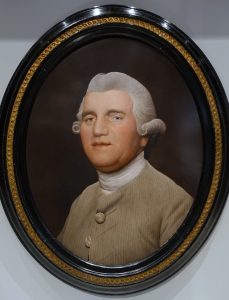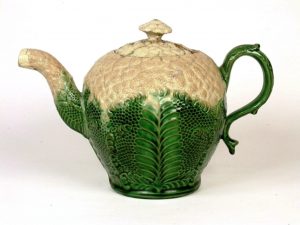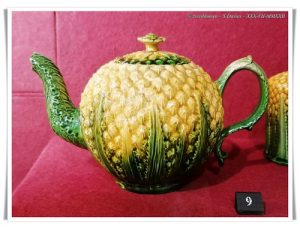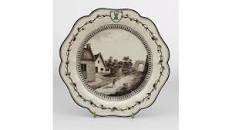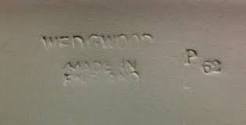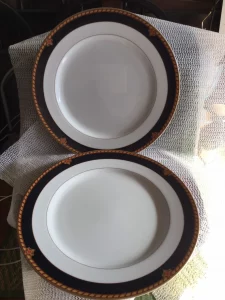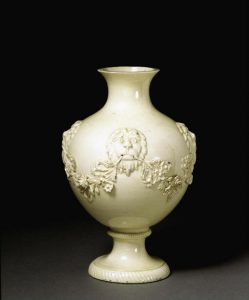Wedgwood – a lecture by Jane Gardiner January 9th 2023
Jane’s very informative lecture focussed entirely on the life of Josiah Wedgwood 1st.
Josiah was a lifelong and fervent supporter of worthy causes. He was born in 1730 into a family of potters and he left school early in order to work in the family business. He learnt every aspect of potting. However, he contracted smallpox and this was to change his life forever, as it left him crippled and unable to kick the wheel. As a result he focussed on experimental work and management. He turned a tragedy into a remarkable career.
He went in to partnership with Whieldon and created Whieldon ware such as this lady in a crinoline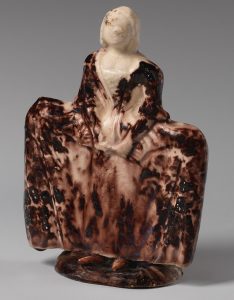
They began experimenting with metallic oxides. The work became known as Tortoise shell ware because of the mottling appearance.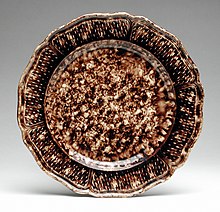
In the early 1750s Wedgwood was very much influenced by the Rococo movement.
In 1759 he was wealthy enough to set up on his own and he opened the Ivy Works. He developed a green glaze which he used on items such as this teapot based on the cauliflower
and the pineapple.
Wedgwood then developed a creamware which enabled him to copy all the shapes. Wedgwood was very proud of this development and it was recognised that this was not a cheap substitute for porcelain but was beautiful in its own way.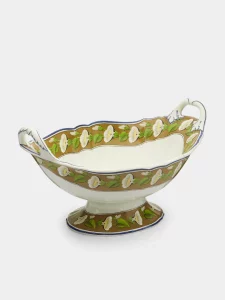
He opened a showroom in London and Queen Charlotte bought some of the creamware. He asked her if he could call it Queensware and she agreed. This of course gave him and the business a major advantage over others who were also creating creamware.
Josiah then came up with a new way of decorating it – by using a transfer printed onto it and thus began the step towards pottery being an industry and not a craft. 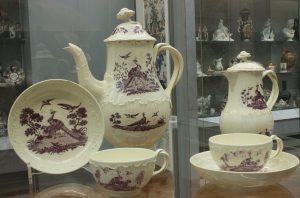
The transfers were inevitably one colour but Wedgwood realised that you could colour in the printed transfer. A design, coloured in pink, was commissioned by Catherine the Great of Russia which became known as Huskware.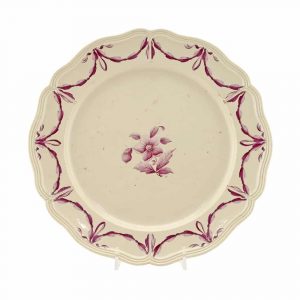
Catherine then commissioned a 952 piece service with every piece depicting a different English landscape and painted by hand 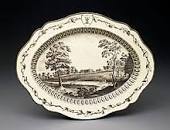
It became known as the Frog service as each piece had a frog on it.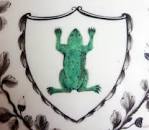
Wedgwood made no money from this commission but it raised his reputation.. Much of this service is still in the Hermitage.
In 1738 Wedgwood started to stamp his name on his work. This was a new idea as up until then makers had stamped an image.
In 1780 Wedgwood’s style changed and it became much more regulated and regimented.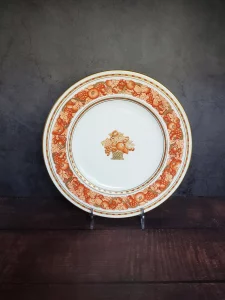
At this time there was an enormous interest in decorated vases – like this cream coloured earthenware vase in neo-classical style
Wedgwood went on to develop glazing – creating pebble vases which were a very clever and reasonable substitute for very expensive similar items.
He developed black ware using black basalt onto which he painted the image.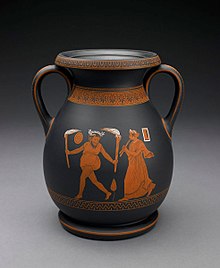
As the demand for decorative work became greater he set up two factories – one for tableware and one for decorative ware – the latter he called Etruria. In this factory he created what he called Etruscan work based on vases which the diplomat Hamilton had collected but many of which later turned out to be Ancient Greek.
His partnership with Bentley was a true partnership with Wedgwood throwing the pot and Bentley kicking the wheel.
He made a flat copy of Hamilton’s big vase but had not yet worked out how to do this on a rounded vase.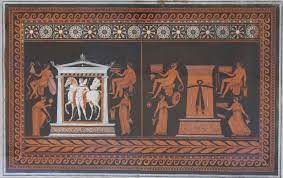
Josiah realised that there was an interest in small scale statues, with griffins being the most popular .He produced pairs in black basalt which were very fashionable. The griffins had been designed by a leading artist of the time. 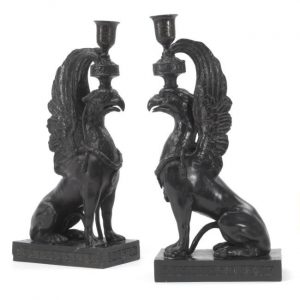
At this time there was also an enormous interest in Roman coins and cameos.The coin below is clearly stamped with the names of Wedgwood and Bentley, which was on all the items they produced from1769-1780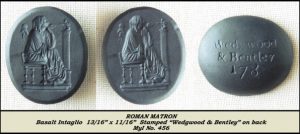
Wedgwood became fascinated with dry stone cameos and embarked upon his biggest experimentation. In 1775 he announced he could successfully produce a white body which he then stained blue – and thus began Jasper ware. The display below shows Wedgwood’s experiments with the colour.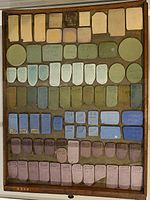
The cobalt that produced the blue became very expensive so he developed Jasper slip and took the country by storm – creating plaques, medallions and jewellery such 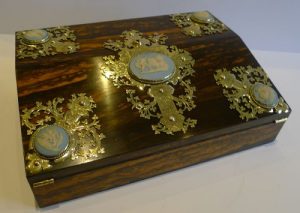 as this Burr maple writing slope decorated with Wedgwood medallions.
as this Burr maple writing slope decorated with Wedgwood medallions.
A famous artist of the time – Lady Templeton had this belt clasp made for her by Wedgwood – and of particular note is the decorative frame around it – cut to have the appearance of precious stones.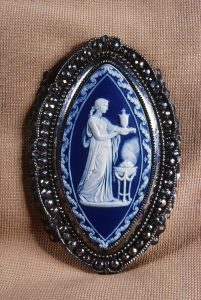
It took Josiah 10 years to be able to apply this to vases but in 1785 he finally did it and produced the Pegasus vase 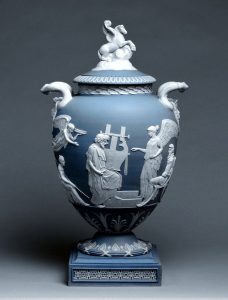
The Portland vase (27BC) was loaned to Wedgwood for a year to see if he could make a copy. He made a black background as blue was too pale. He saw it as his greatest achievement.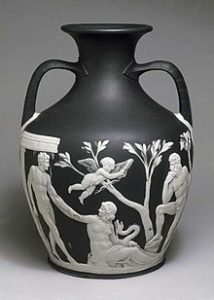
Jane concluded her very interesting lecture with Gladstone’s quote about Josiah Wedgwood.
‘He was the greatest man whoever , in any age or country, applied himself to the important work of uniting art with industry’
